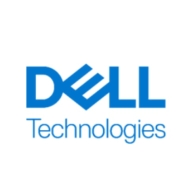

Sangfor HCI and Dell VxFlex Ready Nodes compete in the hyper-converged infrastructure market. Sangfor HCI is noted for its pricing and support, offering cost-effectiveness. Dell VxFlex Ready Nodes are praised for robust features and overall value, providing comprehensive functionality, giving it an upper hand in features and long-term value.
Features: Sangfor HCI offers a simplified infrastructure with integrated software-defined storage, emphasizing easy management and scalability. It features an intuitive interface, streamlined operations, and primary storage management. Dell VxFlex Ready Nodes focus on high performance and flexibility with a scale-out architecture. They provide support for diverse workloads, advanced data services, and seamless integration capabilities.
Ease of Deployment and Customer Service: Sangfor HCI features a straightforward deployment process, complemented by highly responsive customer service. Dell VxFlex Ready Nodes provide a simplified deployment model and offer robust support powered by a global service network.
Pricing and ROI: Sangfor HCI is recognized for its competitive pricing, offering a favorable ROI with low initial investment and operational costs. Dell VxFlex Ready Nodes incur higher setup costs, which many justify with long-term value and scalable capabilities.


VxRack FLEX and VxFlex Ready Nodes, also known as the Flex family, create a server-based SAN by combining virtualization software, known as VxFlex OS, with Dell EMC PowerEdge servers to deliver flexibility, scalability, and capacity on demand. Local storage resources are combined to create a virtual pool of block storage with varying performance tiers. The platform enables you to start small (with as little as four nodes) and scale incrementally. The Flex family provides enterprise-grade data protection, multi-tenant capabilities, and add-on enterprise features such as QoS, thin provisioning, and snapshots. VxFlex OS is the key enabler and provides an unmatched combination of performance, resiliency and flexibility to address enterprise data center needs. The unique features of VxFlex OS make it an excellent complement to Kubernetes for stateful applications, such as databases, continuous integration, logging and monitoring platforms.
Sangfor HCI is an IT infrastructure platform built on converged architecture. It integrates server virtualization, distributed storage, and networking. Sangfor HCI provides a unified management platform that converges compute, storage, networking, and security on a single software stack. This approach delivers a simplified architecture, ease of use, and reliability for business-critical applications.
Hyperconverged infrastructure is a unified system of data storage. HCI combines storage, computing, networking, and management, unlike traditional storage solutions. HCI systems enable you to build your private cloud, expand to a public cloud, or have your own true hybrid cloud. Sangfor HCI presents two product models: The Sangfor HCI server appliance is a hardware version that enables easy deployment. Sangfor HCI software is the digital version combined with a third-party server that enables flexible deployment.
Sangfor HCI supports Windows systems on desktop and is web-based. Its range of use cases cover a wide spectrum of industries, from healthcare to manufacturing. It is applicable for mid- and large-sized businesses. The software is customizable. Users can customize the logo and contact information in the user interface.
Benefits and Features
Use Cases
Sangfor HCI can be applied tin various scenarios:
Reviews from Real Users
Gabriele P., Senior Software and Systems Engineer at SAMU.IT, says "It is flexible like a hyper-convergence system. You can add nodes, and you can scale to have better performance and stability. I also like the backup feature, the recovery system, and the web interface GUI to handle everything."
A Junior Solutions Engineer at a tech services company adds that "Sangfor has many solutions, and you can easily manage their machine servers with just one management. They're always striving for greatness, and they continuously update their products. For example, they have now built endpoint security within the firewall. They are continuously improving not only the security but also all other products."
We monitor all HCI reviews to prevent fraudulent reviews and keep review quality high. We do not post reviews by company employees or direct competitors. We validate each review for authenticity via cross-reference with LinkedIn, and personal follow-up with the reviewer when necessary.